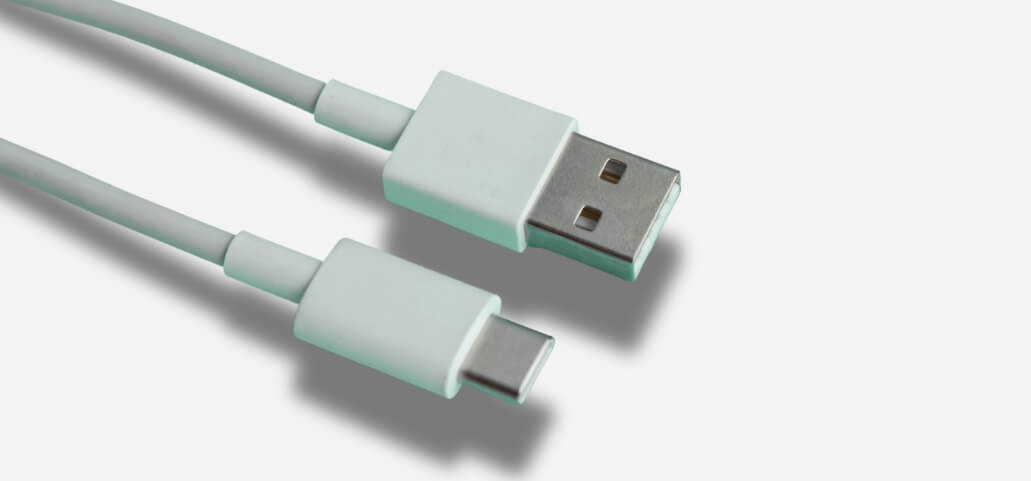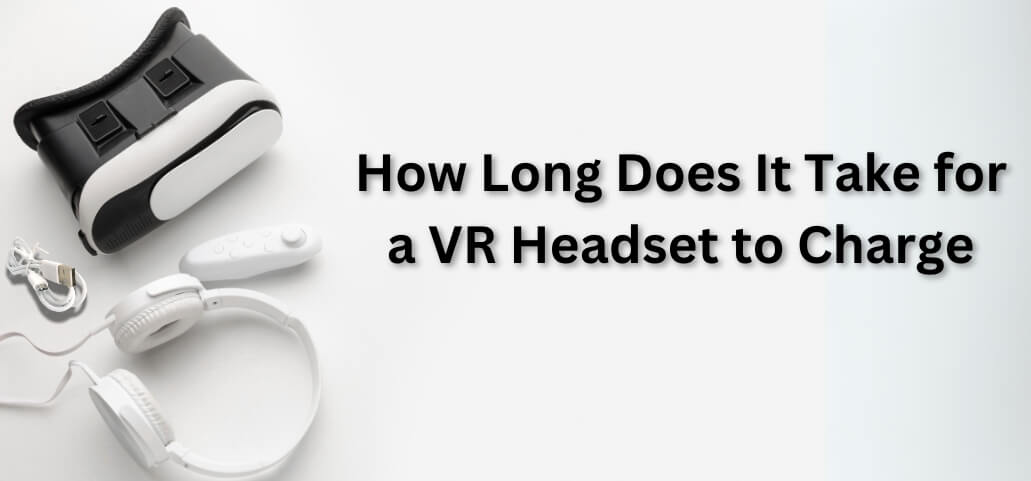Understanding how long does it take for a vr headset to charge, is crucial for an optimal experience. This guide will delve into the various factors that influence how long it takes for a VR headset to charge, including the type of charger used, the capacity of the battery, and usage patterns. Additionally, we’ll cover how environmental conditions, such as temperature, can affect charging efficiency. By the end, you’ll have a comprehensive understanding of how to optimize your VR headset’s battery life and charging time, ensuring you get the most out of your virtual-reality adventures. So let’s dive in and explore how long does it take for a vr headset to charge.
The Concept of Charging Time and Its Importance
The time it takes to charge a battery to its maximum capacity is called charging time. A crucial aspect that can impact your overall VR headset experience is the amount of time it takes to charge. Long charging times can be frustrating, especially when you’re eager to immerse yourself in a new game or virtual environment.
Understanding how charging time works can help you make informed decisions about which VR headset to purchase and how to manage your device’s battery more efficiently. In this section, we’ll break down the basics of charging time and explain why it’s a vital consideration for VR enthusiasts.
Factors Influencing the Charging Time for VR Headsets

There are a number of variables that can greatly affect how long it takes to charge a virtual reality headset. You can better manage your expectations and maximize your usage if you have a good grasp of these factors.
- Battery Capacity: Your virtual reality headset’s charging time is directly proportional to its battery capacity. For example, a headset with a 5000mAh battery might take significantly longer to charge compared to one with a 3000mAh battery.
- Charging Method: Different types of chargers, such as USB-C, micro USB, or wireless charging, can impact the overall charging time. USB-C chargers are generally faster and more efficient, while wireless charging, although convenient, might take more time to reach full capacity.
- Usage while Charging: Using your VR headset while it is charging can significantly affect how long it takes for the device to reach full battery capacity. This is because the device is consuming power even as it is being charged, leading to a slower net increase in battery percentage.
- Battery Health and Age: Charging times increase as a result of a decline in battery capacity with age. A new VR headset might charge quickly, but after a year or two of use, the same device could take much longer to reach full charge due to battery degradation.
- Environmental Factors: Extreme temperatures can also impact the charging time of your VR headset. High heat can cause the battery to overheat, activating safety mechanisms that slow down charging. Conversely, very cold temperatures can reduce the efficiency of the battery, also leading to slower charging times. Keeping your device in a moderate environment can help optimize the charging process.
By understanding these various factors, you can better manage your VR headset’s charging routines and ensure that the device is ready for use when you need it.
How Long Does It Take for a VR Headset to Charge?

To give you a clearer picture of what to expect, we’ve compared the charging times of some of the most popular VR headsets on the market. Understanding these details can help you make an informed decision about which headset might best suit your needs, especially if you value efficient charging and extended usage times.
1. Oculus Quest 2:
- Battery Capacity: 3640mAh
- Average Charging Time: 2.5 hours
- Usage Time: Up to 3 hours of gaming
- Additional Info: The Oculus Quest 2 is known for its ease of use and wireless capabilities, making it a popular choice for a wide range of gamers.
2. HTC Vive Cosmos:
- Battery Capacity: 6000mAh
- Average Charging Time: 3 hours
- Usage Time: Up to 3.5 hours
- Additional Info: The HTC Vive Cosmos offers a modular faceplate design, allowing for various upgrades and customizations.
3. PlayStation VR:
- Battery Capacity: 3500mAh
- Average Charging Time: 2 hours
- Usage Time: Up to 5 hours
- Additional Info: PlayStation VR is highly integrated with the PlayStation ecosystem, providing a seamless experience for console gamers.
4. Valve Index:
- Battery Capacity: 5400mAh
- Average Charging Time: 2.5 hours
- Usage Time: Up to 6 hours
- Additional Info: The Valve Index is praised for its high fidelity and extensive tracking features, offering an immersive VR experience.
This comparison can help you understand how different headsets stack up against each other in terms of charging efficiency and overall usage time, key factors to consider when choosing the right VR headset for your needs.
Tips for Optimizing Your VR Headset’s Charging Time
Now that we understand the various factors that influence how long it takes for a VR headset to charge, let’s explore some practical tips for optimizing your device’s battery life and charging time:
- Use Compatible Chargers: Never charge a virtual reality headset without first checking the manufacturer’s instructions. Using a charger that isn’t compatible with your device can shorten the life of its battery and cause other problems.
- Avoid Using the Headset While Charging: As mentioned earlier, using your VR headset while it is charging can significantly slow down the charging process. Until the battery dies entirely, do your best not to use the device.
- Keep Your Battery Healthy: Over time, batteries can become less efficient and take longer to charge. To keep your VR headset’s battery healthy, always charge it before it completely drains and try to avoid leaving it plugged in for extended periods.
- Manage Your Usage: The more you use your VR headset, the quicker its battery will drain, leading to more frequent charges. Be mindful of your usage and try to limit prolonged VR sessions if you know you won’t have time to charge the device fully.
- Store Your Headset Properly: Keep your virtual reality headset in a safe place when they’re not in use. High temperatures can damage the battery, leading to longer charging times. Keep your device in a cool, dry place when not in use.
Future of VR Headset Battery Technology
As VR technology continues to advance, so does battery technology. Manufacturers are constantly striving to improve battery efficiency and reduce charging times for their devices. Some advancements in this area include:
- Faster Charging Technologies: The development of faster charging technologies like Quick Charge and Super VOOC has significantly reduced the time it takes to charge devices.
- Wireless Charging: Users may find wireless charging more convenient because it eliminates the need for cords. It also gives you more options for where to plug in your device.
- Longer Battery Life: With advancements in battery technology, we can expect future VR headsets to have longer battery life, reducing the need for frequent charging.
Conclusion
In conclusion, how long it takes for a VR headset to charge depends on various factors such as battery capacity, charging method, usage while charging, battery health and age, and environmental factors. By following the tips mentioned above and understanding the concept of charging time, you can optimize your VR headset’s battery life and ensure a smooth and enjoyable virtual reality experience. So, whether you’re planning an all-day marathon gaming session or just want to keep your device fully charged for occasional use, make sure to keep these factors in mind to get the most out of your VR headset.
Frequently Asked Questions
Q1: How long does it take for a VR headset to charge fully?
Answer: This depends on various factors such as battery capacity, charging method, and usage while charging. A virtual reality headset’s battery life, on average, can be two to four hours.
Q2: Can I use my VR headset while it is charging?
Answer: It is not recommended to use your VR headset while it is charging as this can significantly slow down the charging process. It’s best to wait until the device reaches full battery capacity before using it again.
Q3: How do I know when my VR headset is fully charged?
Answer: Most VR headsets have a charging indicator that turns off when the device is fully charged. In addition to using the app that comes with your device, you can also see the battery life indicator on the screen. However, it’s always best to charge your headset for a few extra minutes even after reaching full capacity to ensure maximum battery life.
Q4: Can I use any charger to charge my VR headset?
Answer: Absolutely not! The charger that came with your virtual reality headset should be the one the manufacturer suggests. Using a charger that isn’t compatible with your device can shorten the life of its battery and cause other problems.
Q5: What is fast charging technology?
Answer: Fast charging technology allows devices to charge more quickly by delivering higher wattage to the battery. Many modern VR headsets incorporate fast charging technology to reduce charging times.
Disclaimer: This blog post’s content is solely intended for educational purposes. For further instructions and suggestions, always consult the user manual and manufacturer’s guidelines that came with your VR headset. Additionally, ensure you are using the appropriate accessories and charging equipment recommended for your specific model to avoid any potential damage or safety issues.
Personal Experience: As a VR enthusiast myself, I’ve tried various headsets from different brands and experienced the challenges of managing battery life and charging times. Initial experiences were frustrating due to frequent interruptions caused by depleted batteries. However, by following the tips mentioned above, I’ve significantly improved my VR experience and reduced downtime. For instance, implementing a regular charging schedule and investing in high-quality charging docks has made a noticeable difference. Optimizing charging practices has allowed me to enjoy longer sessions without interruptions, enhancing the overall immersive experience.
Why Trust Our Content?
Professionals in the area research and review all of our information. Our goal is to offer you information that is accurate, dependable, and useful so you can make a well-informed decision on your virtual reality headset. Our team consists of seasoned VR users, tech enthusiasts, and industry professionals who continuously update their knowledge to stay current with the latest advancements and best practices. Trust our expertise to guide you through the world of virtual reality technology, ensuring you get the most out of your VR experience.

